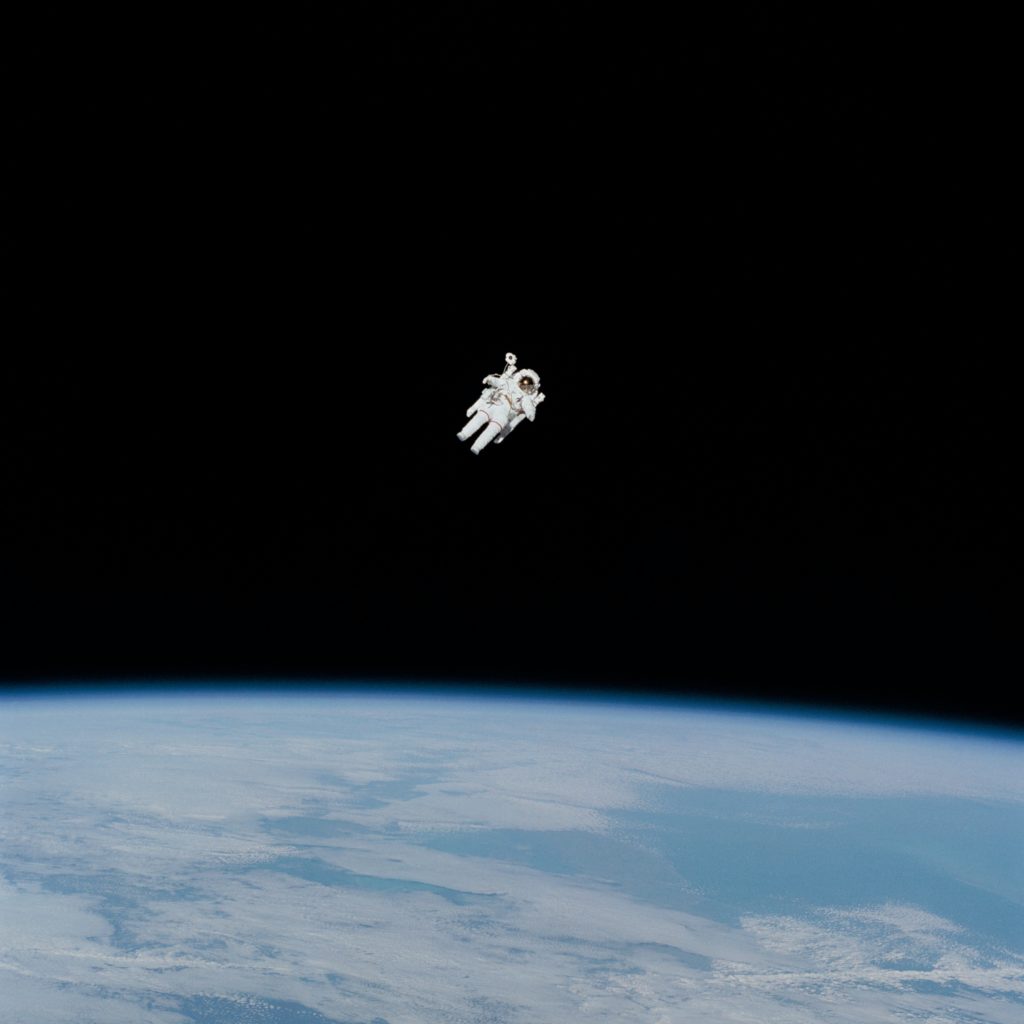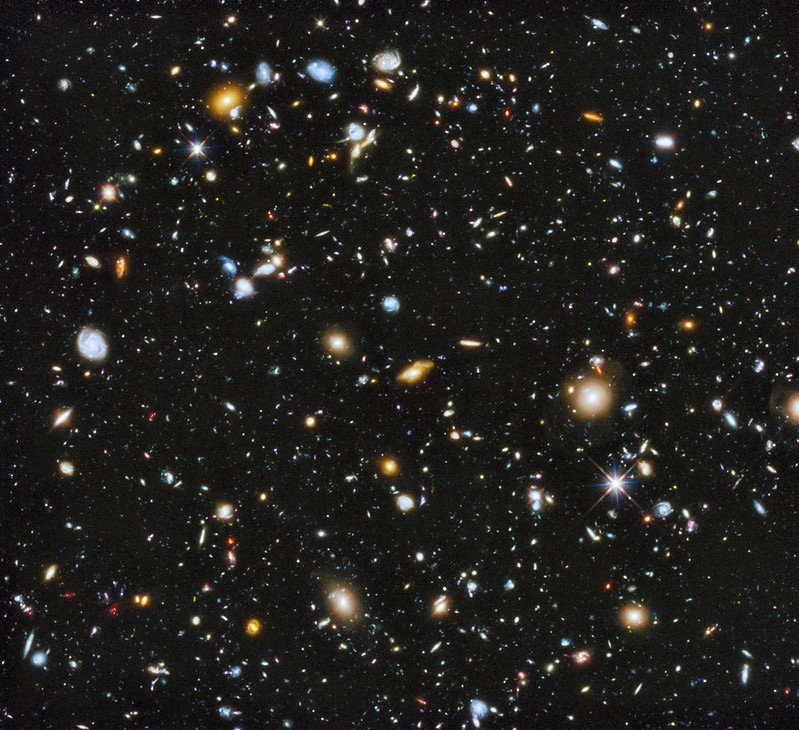Perspective. It’s one of the four qualities of mind that the Dalai Lama and Archbishop Desmond Tutu – two of modern day’s spiritual giants – suggest for unlocking the lasting happiness that we so often long for.
Indeed, adopting a “God’s eye perspective”, or what astronauts have deemed the “Overview Effect”, can prove to be incredibly beneficial in allowing us to “transcend our limited identity and limited self-interest.”
As the Archbishop says in The Book of Joy, “Many astronauts have reported that once they glimpsed the Earth from space – a small blue ball floating in the vast expanse, lacking our human-made borders – they never looked at their personal or national interests in quite the same way again. They saw the oneness of terrestrial life and the preciousness of our planetary home.”

While we may not be afforded the opportunity to view earth from space, we can, however, learn to simulate this perspective by immersing ourselves in cosmology.
Judy Cannato’s book Radical Amazement: Contemplative Lessons From Black Holes, Supernovas, and Other Wonders of the Universe (2006) invites us do just that through “radical amazement,” or what she describes as “the stance in which we are invited to live, a cultivated way of life filled with attentiveness and vision.”
She writes:
“All of life – every bit and particle of experience in every arena we inhabit and at every level we have awareness – invites us into the experience of radical amazement that is a doorway to the divine.”
A small book filled with cosmic-size insights revealing the harmony of science and spirituality, below are bullet points from her introduction that are interesting to ponder — catapulting us away from the limited atmosphere of self and toward the vast, mysterious complexity of life.
Start with this:
“Imagine that each grain of sand is a star. On a very clear night, in the right location, with good eyes and no light pollution, we can see two to three thousand stars.”
“Pick out one grain of sand to represent our Sun. Imagine our solar system with all its planets and planetoids orbiting as they have for about five billion years. Now look for the next closest grain of sand. That is Proxima Centauri, part of the Alpha Centauri system, only 4.35 light years away. Doesn’t that sound close? Yet light travels at the speed of 186,000 miles per second, or 670 million miles per hour. A beam of light can travel from New York to Los Angeles in 0.016 seconds. It can pass around Earth at the equator in 0.133 seconds. The moon is 239,000 miles away, yet a light beam can get there in only 1.29 seconds and go beyond to the sun (93 million miles away) in just eight minutes. Such incredible speed, yet it takes over four years to reach our closest neighboring star! If we went out tonight, looked into the dark sky and spotted Proxima Centauri, the light that reaches our eyes – traveling at 186,000 miles per second – will have left there 4.35 years ago.”

“Now imagine that around the grain of sand that represents our sun there is a coherent grouping of stars. This group represents the Milky Way, a spiral-shaped galaxy about one hundred thousand light years across and ten thousand light years deep, with between two hundred and four hundred billion stars. To continue the analogy with grains of sand, to represent all the stars in the Milky Way galaxy we would need a rather large dump truck.”
As for other galaxies:
“As recently as the 1920s we thought that the Milky Way galaxy comprised the entire universe, but in 1923 Edwin Hubble photographed the Andromeda galaxy which lies 2.5 million light years away. Today we know that there are billions of galaxies, each with billions of stars. The Hubble Space Telescope, launched in 1990 and orbiting 375 miles above Earth, has been able to capture images approximately twelve billion light years away!”

“How many grains of sand does it take to represent the stars in the known universe? Try to imagine railroad hopper cars, filled and passing by at the rate of one per second, twenty-four hours a day, seven days a week. It would take three years for all the sand-filled cars to pass by! Our universe is immense, boggling the mind in any attempt to grasp its expanse.”
As for the size of the universe:
“Beside discovering the existence of other galaxies, Edwin Hubble confirmed that the universe is expanding, a major revolution in the previous concept of a static, fixed cosmos that scientists had always envisioned. Even Einstein resisted the notion of an expanding universe.”
As for the Big Bang:
“The discovery that the universe is expanding led the Belgian priest and physicists George Lemaître to assert that the universe must have had a starting point, just as the book of Genesis says. In 1949 George Gamow formulated the theory now known as the Big Bang. Although it has been modified along the way, this theory remains the best explanation of the origin of the universe to date.”
“In 1998 Wendy Freedman and a team of astrophysicists concluded that the Big Bang occurred about 13.7 billion years ago.”

As for dark matter and dark energy:
“In 2003, using the Wilkinson Microwave Anisotropy Probe (WMAP), scientists determined that about twenty-five percent of the universe is what is called dark matter. Dark matter cannot be seen but can be detected by the gravitational pull it exerts. Even more amazing, approximately seventy percent of the universe is dark energy, the force that is causing the rate of expansion of the universe to accelerate. Only about five percent of the universe is composed of ordinary matter – what we can observe directly in some way. In other words, there is ninety-five percent more universe out there than what we can see!”
As for black holes:
“At the center of every galaxy, including our own, there is a black hole, a region of space governed by a singularity of unimaginable density from which not even light escapes.”
As for the universe’s incredible precision:
“Finally, some physicists have come to the conclusion that from the first moment of the Big Bang there has been the impetus toward life. If the universe had unfolded one trillionth of a trillionth of a percent slower, the gravitational force would have been too great and the universe would have imploded before anything of significance occurred. If, however, the universe had unfolded one trillionth of a trillionth of a percent faster, matter would have escaped the gravitational pull and the cosmos would have been flung apart before anything could happen. It is not far-fetched to conclude that there has been an intentionality toward life all along.”

Ultimately, Cannato writes:
“All creation has come about through a single cosmic event, often called the Big Bang. Creation is not a static, fixed event, but a cosmogenesis, an ongoing act of creation and creativity. Because all life is part of this single cosmic event, all life is connected at its most basic level.”
In other words:
“When we are engaged in the experience and practice of radical amazement, we begin to distinguish between the genuine and the junk. Caught up in contemplative awareness and rooted in love, we begin to break free from cultural confines and embrace the truth that lies at the heart of all reality: We are one.”
For a visual representation, check out AMNH’s video, “The Known Universe.”
Similar posts:
The Dalai Lama and Archbishop Desmond Tutu on the Four Qualities of Mind that Lead to Joyful Living
Listening for the Music: A Note About Blessings in Everyday Life
Epictetus on Willing What God Wills – or Doesn’t Will
The Great Persian Poet Rumi on Spreading Your Wings
Paulo Coelho on Taking Risks and Embracing Life’s Magic Moments
“I Love the Word Impossible”: Ann Kiemel on Our “Giant of a God”
Hallelujah Anyway: Anne Lamott on Extending and Receiving Mercy in a Broken World
Worry, Not: Søren Kierkegaard on What We Can Learn from the Birds of the Air and Lilies of the Field


